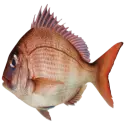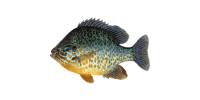Snapper nutrition: calories, carbs, GI, protein, fiber, fats
Fish, snapper, mixed species, raw
*all the values are displayed for the amount of 100 grams
Top nutrition facts for Snapper

| Calories ⓘ Calories for selected serving | 100 kcal |
|
Glycemic index ⓘ
Source: *Explanation
Check out our Glycemic index chart page for the full list.
|
0 (low) |
| Net Carbs ⓘ Net Carbs = Total Carbohydrates – Fiber – Sugar Alcohols | 0 grams |
| Acidity (Based on PRAL) ⓘ PRAL (Potential renal acid load) is calculated using a formula. On the PRAL scale the higher the positive value, the more is the acidifying effect on the body. The lower the negative value, the higher the alkalinity of the food. 0 is neutral. | 7.4 (acidic) |
Potassium ⓘHigher in Potassium content than 83% of foods
Protein ⓘHigher in Protein content than 77% of foods
Vitamin B12 ⓘHigher in Vitamin B12 content than 77% of foods
Selenium ⓘHigher in Selenium content than 75% of foods
Magnesium ⓘHigher in Magnesium content than 70% of foods
Snapper calories (kcal)
| Calories for different serving sizes of snapper | Calories | Weight |
|---|---|---|
| Calories in 100 grams | 100 | |
| Calories in 3 oz | 85 | 85 g |
| Calories in 1 fillet | 218 | 218 g |
Snapper Glycemic index (GI)
Source:
*Explanation
Check out our Glycemic index chart page for the full list.
Mineral coverage chart
Mineral chart - relative view
Vitamin coverage chart
Vitamin A:
96µg of 900µg
11%
Vitamin E:
2.9mg of 15mg
19%
Vitamin D:
31µg of 20µg
153%
Vitamin C:
4.8mg of 90mg
5.3%
Vitamin B1:
0.14mg of 1mg
12%
Vitamin B2:
0.01mg of 1mg
0.69%
Vitamin B3:
0.85mg of 16mg
5.3%
Vitamin B5:
2.3mg of 5mg
45%
Vitamin B6:
1.2mg of 1mg
92%
Folate:
15µg of 400µg
3.8%
Vitamin B12:
9µg of 2µg
375%
Vitamin K:
0.3µg of 120µg
0.25%
Vitamin chart - relative view
Macronutrients chart
Protein:
Daily Value: 41%
20.5 g of 50 g
20.5 g (41% of DV )
Fats:
Daily Value: 2%
1.3 g of 65 g
1.3 g (2% of DV )
Carbs:
Daily Value: 0%
0 g of 300 g
0 g (0% of DV )
Water:
Daily Value: 4%
76.9 g of 2,000 g
76.9 g (4% of DV )
Other:
1.3 g
1.3 g
Protein quality breakdown
Tryptophan:
690mg of 280mg
246%
Threonine:
2697mg of 1,050mg
257%
Isoleucine:
2835mg of 1,400mg
203%
Leucine:
5001mg of 2,730mg
183%
Lysine:
5649mg of 2,100mg
269%
Methionine:
1821mg of 1,050mg
173%
Phenylalanine:
2403mg of 1,750mg
137%
Valine:
3168mg of 1,820mg
174%
Histidine:
1812mg of 700mg
259%
Fat type information
Saturated fat:
0.29 g
Monounsaturated fat:
0.25 g
Polyunsaturated fat:
0.46 g
All nutrients for Snapper per 100g
| Nutrient | Value | DV% | In TOP % of foods | Comparison |
| Vitamin A | 32µg | 4% | 39% | |
| Calories | 100kcal | 5% | 73% |
2.1 times more than Orange
|
| Protein | 21g | 49% | 23% |
7.3 times more than Broccoli
|
| Fats | 1.3g | 2% | 72% |
24.9 times less than Cheese
|
| Vitamin C | 1.6mg | 2% | 38% |
33.1 times less than Lemon
|
| Net carbs | 0g | N/A | 75% |
N/A
|
| Carbs | 0g | 0% | 100% |
N/A
|
| Cholesterol | 37mg | 12% | 39% |
10.1 times less than Egg
|
| Vitamin D | 10µg | 102% | 38% |
4.6 times more than Egg
|
| Magnesium | 32mg | 8% | 30% |
4.4 times less than Almonds
|
| Calcium | 32mg | 3% | 43% |
3.9 times less than Milk
|
| Potassium | 417mg | 12% | 17% |
2.8 times more than Cucumber
|
| Iron | 0.18mg | 2% | 90% |
14.4 times less than Beef broiled
|
| Sugar | 0g | N/A | 100% |
N/A
|
| Fiber | 0g | 0% | 100% |
N/A
|
| Copper | 0.03mg | 3% | 90% |
5.1 times less than Shiitake
|
| Zinc | 0.36mg | 3% | 77% |
17.5 times less than Beef broiled
|
| Phosphorus | 198mg | 28% | 39% |
1.1 times more than Chicken meat
|
| Sodium | 64mg | 3% | 62% |
7.7 times less than White bread
|
| Vitamin E | 0.96mg | 6% | 47% |
1.5 times less than Kiwi
|
| Selenium | 38µg | 69% | 25% | |
| Manganese | 0.01mg | 1% | 85% | |
| Vitamin B1 | 0.05mg | 4% | 74% |
5.8 times less than Pea raw
|
| Vitamin B2 | 0mg | 0% | 96% |
43.3 times less than Avocado
|
| Vitamin B3 | 0.28mg | 2% | 84% |
33.7 times less than Turkey meat
|
| Vitamin B5 | 0.75mg | 15% | 44% |
1.5 times less than Sunflower seeds
|
| Vitamin B6 | 0.4mg | 31% | 32% |
3.4 times more than Oats
|
| Vitamin B12 | 3µg | 125% | 23% |
4.3 times more than Pork
|
| Vitamin K | 0.1µg | 0% | 88% |
1016 times less than Broccoli
|
| Folate | 5µg | 1% | 79% |
12.2 times less than Brussels sprouts
|
| Saturated fat | 0.29g | 1% | 74% |
20.7 times less than Beef broiled
|
| Choline | 65mg | 12% | 61% | |
| Monounsaturated fat | 0.25g | N/A | 77% |
39 times less than Avocado
|
| Polyunsaturated fat | 0.46g | N/A | 63% |
102.8 times less than Walnut
|
| Tryptophan | 0.23mg | 0% | 60% |
1.3 times less than Chicken meat
|
| Threonine | 0.9mg | 0% | 60% |
1.2 times more than Beef broiled
|
| Isoleucine | 0.95mg | 0% | 61% |
Equal to Salmon raw
|
| Leucine | 1.7mg | 0% | 61% |
1.5 times less than Tuna Bluefin
|
| Lysine | 1.9mg | 0% | 58% |
4.2 times more than Tofu
|
| Methionine | 0.61mg | 0% | 57% |
6.3 times more than Quinoa
|
| Phenylalanine | 0.8mg | 0% | 64% |
1.2 times more than Egg
|
| Valine | 1.1mg | 0% | 60% |
1.9 times less than Soybean raw
|
| Histidine | 0.6mg | 0% | 64% |
1.2 times less than Turkey meat
|
| Caffeine | 0mg | 0% | 100% | |
| Omega-3 - EPA | 0.05g | N/A | 35% |
13.5 times less than Salmon
|
| Omega-3 - DHA | 0.26g | N/A | 34% |
5.6 times less than Salmon
|
| Omega-3 - DPA | 0.07g | N/A | 34% |
2.6 times less than Salmon
|
Check out similar food or compare with current
NUTRITION FACTS LABEL
Nutrition Facts
___servings per container
Serving Size ______________
Serving Size ______________
Amount Per 100g
Calories 100
% Daily Value*
2.1%
Total Fat
1.3g
1.3%
Saturated Fat 0.29g
0
Trans Fat
0g
12%
Cholesterol 37mg
2.8%
Sodium 64mg
0
Total Carbohydrate
0g
0
Dietary Fiber
0g
Total Sugars 0g
Includes ? g Added Sugars
Protein
21g
Vitamin D
408mcg
51%
Calcium
32mg
3.2%
Iron
0.18mg
2.3%
Potassium
417mg
12%
*
The % Daily Value (DV) tells you how much a nutrient in a serving of food contributes to a daily diet. 2,000 calories a day is used for general nutrition advice.
Health checks
ⓘ
Dietary cholesterol is not associated with an increased risk of coronary heart disease in healthy individuals. However, dietary cholesterol is common in foods that are high in harmful saturated fats.
Source
Low in Cholesterol
ⓘ
Trans fat consumption increases the risk of cardiovascular disease and mortality by negatively affecting blood lipid levels.
Source
No Trans Fats
ⓘ
Saturated fat intake can raise total cholesterol and LDL (low-density lipoprotein) levels, leading to an increased risk of atherosclerosis. Dietary guidelines recommend limiting saturated fats to under 10% of calories a day.
Source
Low in Saturated Fats
ⓘ
While the consumption of moderate amounts of added sugars is not detrimental to health, an excessive intake can increase the risk of obesity, and therefore, diabetes.
Source
Low in Sugars
References
All the values for which the sources are not specified explicitly are taken from FDA’s Food Central. The exact link to the food presented on this page can be found below.


